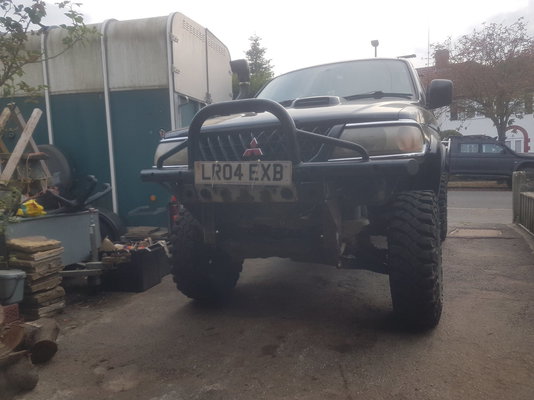You are using an out of date browser. It may not display this or other websites correctly.
You should upgrade or use an alternative browser.
You should upgrade or use an alternative browser.
Quickest way to remove light rust
- Thread starter Joe 90
- Start date
slim_boy_fat
Member
- Messages
- 29,188
- Location
- Scottish Highlands
Flap disc in an angry grinder?
Barking Mat
Cuddler of hedgehogs.
- Messages
- 13,479
- Location
- France, Brittany.
Or an orbital or belt sander.
steveo3002
Member
- Messages
- 7,952
id go with a flap disc of a suitable grade , wire wheels tend to polish the surface and your paint might not stick that great vs a sanded finish
Ross365
Member
- Messages
- 2,042
- Location
- UK
That's an interesting point. In recent times, I've been going up a learning curve with the grit blaster I bought about a year ago. Now, many would say that a blasted surface is the best surface for paint. I've been using re-cycled glass as the media, and maybe getting the gun too close to the work piece. When I spray painted some blasted parts, I'd get these odd spots where the paint did not take and I realised the spots were places where the glass had embedded in the metal. So I decided to eliminate the problem by using a wire brush on a grinder to remove any embedded bits after the blasting. The extent to which the high-speed brush polished the blasted surface was quite a surprise - very visible!id go with a flap disc of a suitable grade , wire wheels tend to polish the surface and your paint might not stick that great vs a sanded finish
Alan Reynolds
Member
- Messages
- 1,301
I sharpen my wire brushes on the grinder to perk up the tips of the wires. Otherwise they just polish.
Barking Mat
Cuddler of hedgehogs.
- Messages
- 13,479
- Location
- France, Brittany.
Never thought, or heard of that.I sharpen my wire brushes on the grinder to perk up the tips of the wires. Otherwise they just polish.
I haven't a clue what the rpm is but what can be wrong with it? Can it be too fast?Wire cup brush either on an angle grinder (check the rpm though) or get one with a spindle and use it in a drill.
Ross365
Member
- Messages
- 2,042
- Location
- UK
A wire brush in a drill (typically 3,000rpm) is much less effective than a brush on a grinder (typically 11,000rpm), but grinders aren't reversible. I think the grinders are much more than 3 or 4 times effective than the drill. It's like performance goes with speed squared?
I've normally 40 grit for welds. What grit is best for cleaning rust?id go with a flap disc of a suitable grade , wire wheels tend to polish the surface and your paint might not stick that great vs a sanded finish
Gragson
Member
- Messages
- 2,707
- Location
- Bucks
Which got me wondering, is there a commercially available reversible angle grinder with all the perils that might ensue.if you're using a wire brush in a drill, change the direction of rotation, that keeps the wires sharp
Not to derail OP's thread, might start a new one. Just curious

brightspark
Member
- Messages
- 41,315
- Location
- yarm stockton on tees
they dont last long mindBought one of these plastic wheels in lidl for giggles. Works well for removing paint and rust.
View attachment 310227

ronan
Member
- Messages
- 11,282
True.they dont last long mind
123hotchef
Member
- Messages
- 14,318
- Location
- Kent
even worn flap discs polish and the paint dont stick!
brightspark
Member
- Messages
- 41,315
- Location
- yarm stockton on tees
blast with kiln dried sand 



123hotchef
Member
- Messages
- 14,318
- Location
- Kent
is that good enough? if so i am off out to get some for my bumperblast with kiln dried sand


123hotchef
Member
- Messages
- 14,318
- Location
- Kent


